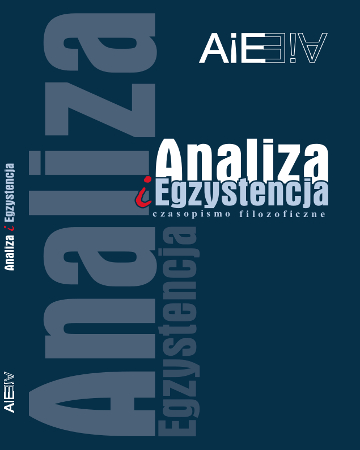
ISSN: 1734-9923
eISSN: 2300-7621
OAI
DOI: 10.18276/aie.2022.58-06





Lista wydań /
58 (2022)
The Academia Electronica – Vision, Experiment, Future
(Academia Electronica - wizja, eksperyment, przyszłość)
| Autorzy: |
Michał
Ostrowicki

Uniwersytet Jagielloński |
| Słowa kluczowe: | świat wirtualny wirtualna społeczność realność awatar uniwersytet otwarty |
| Data publikacji całości: | 2022 |
| Liczba stron: | 14 (111-124) |
| Klasyfikacja JEL: | I21 |
Abstrakt
Artykuł przedstawia historię Academia Electronica – wirtualnej części Uniwersytetu Jagiellońskiego, działającej od 2007 w Second Life. Zaprezentowano przemiany jakim Academia podlegała oraz zarysowano problematykę, która była poruszana w niej na przestrzeni 14 lat. Wyszczególniono trzy wątki analizy, z których pierwszy dotyczy filozofii rzeczywistości wirtualnej, drugi prowadzenia dydaktyki w środowisku graficznym 3d oraz trzeci, związany ze społecznym znaczeniem otwartego uniwersytetu. Tekst jest autobiograficzny, w tym znaczeniu zawiera krótkie wspomnienia dotyczące szeregu zdarzeń, tak związanych z rozwojem Academia Electronica jako uniwersytetu, jak również osobistych refleksji wynikających z długotrwałego przebywania w świecie Second Life.
Pobierz plik
Plik artykułu
Bibliografia
| 1. | Alves, P., Miranda, L., Morais, C. (2017). The Influence of Virtual Learning Environments in Students’ Performance. Universal Journal of Educational Research, 5 (3), 517-527. DOI: http://dx.doi.org/10.13189/ujer.2017.050325 |
| 2. | Au, W. (2008). The Making of Second Life: Notes from the New World. New York: Harper Collins e-books. |
| 3. | Bell, D. (2001). Introduction to cyberculture. London and New York: Tylor and Francis Group, Routledge. |
| 4. | Branden J. (2004). Branden W. Joseph on Billy Klüver. Artforum International Magazine, Vol. 42 (no. 7), 39-42. |
| 5. | Chalmers, A., Zányi, E. (2009). Real Virtuality: emerging technology for virtually recreating reality. Becta – leading next generation learning, November. |
| 6. | Cubitt, S., Thomas, P. (2015). The New Materialism in Media. In: V. Catricalà (ed.), Media Art. Towards a New Definition of Arts in the Age of Technology (19-38). Italy: Fondazione Mondo Digitale. |
| 7. | Dolphijn, R., Tuin, I. (2012). New Materialism: Interviews & Cartographies. Ann Arbor: Open Humanities Press, University of Michigan Library. DOI: http://dx.doi.org/10.3998/ohp.11515701.0001.001 |
| 8. | Don, I. (1990). Technology and the Lifeworld. From Garden to Earth. Indiana University Press. |
| 9. | Drucker, J. (2009). Speclab. Digital Aesthetics and Projects in Speculative Computing. University of Chicago Press. |
| 10. | Figueroa Sarriera, H. (2006). Connecting the Selves: Computer-mediated Identification Processes. In: D. Silver, A. Massarini (eds.), Critical Cybercultures Studies (97-106). New York University Press. |
| 11. | Heim, M. (1993). Metaphysics of Virtual Reality. New York: Oxford University Press. |
| 12. | Heim, M. (1999). The Cyberspace Dialectic. In: P. Lunenfeld (ed.), The Digital Dialectic: New Essays on New Media (24-45). London: The MIT Press. |
| 13. | Yu-Ju, L. (2020). Immersion, interaction, and experience-oriented learning: Bringing virtual reality into FL learning. Language Learning & Technology, University of Hawaii National Foreign Language Resource Center Center for Language & Technology (co-sponsored by Center for Open Educational Resources and Language Learning, University of Texas at Austin), February, Volume 24 (1), 1–15. |
| 14. | LaValle, S. (2017). Virtual Reality. Cambridge: University of Illinois. |
| 15. | Lister, M., Kelly, K., Giddings, S., Dovey, J., Grant, I. (2008). New Media: a Critical Intoduction. Routledge, New York: Taylor & Francis e-Library. |
| 16. | Mann, S., Furness, T., Yuan, Y., Iorio, J., Wang, Z. (2018). All Reality: Virtual, Augmented, Mixed (X), Mediated (X,Y), and Multimediated Reality. Cornell University. |
| 17. | Michailidou, A., Economides A. (2003). Elearn: Towards a Collaborative Educational Virtual Environment. Journal of Information Technology Education, Informing Science Institute, Volume 2, 131-152. |
| 18. | Turkle, S. (1997). Life on the screen: Identity in the Age of Internet. New York: Touchstone, Simon & Schuster. |
| 19. | Wilkes, S. (2016). Communication Modality, Learning, and Second Life. In: B. Dalgarno, B. Tynan, S. Gregory, M. Lee (eds.), Learning in Virtual Worlds. Research and Applications (41-65). Athabasca University Press. |
| 20. | Varela, F., Rosch, E., E., Thompson. (1993). The Embodied Mind. Cognitive Science and Human Experience. Cambridge, Massachusetts: The MIT Press. DOI: https://doi.org/10.7551/mitpress/6730.001.0001 |
| 21. | Ventrella, J. (1995). Eukaryotic virtual reality: The emergent art of artificial life. Proceedings: 6th International Symposium on Electronica Art - ISEA (300-304). Montreal. Pobrane ze strony: http://www.ventrella.com/Alife/Eukaryotic.html |
| 22. | Westbrook, V. (2006). The virtual learning future. Teaching in Higher Education. Tylor and Francis Group, Routledge, Vol. 11, 471-482. DOI: https://doi.org/10.1080/13562510600874276 |
| 23. | Quaranta, D. (2013). Beyond New Media. Brescia: Link Editions. |
| 24. | Zielinski, S. (2011). …After the Media. News from the Slow-Fading Twentieth Century. Minneapolis: Univocal Publishing. |